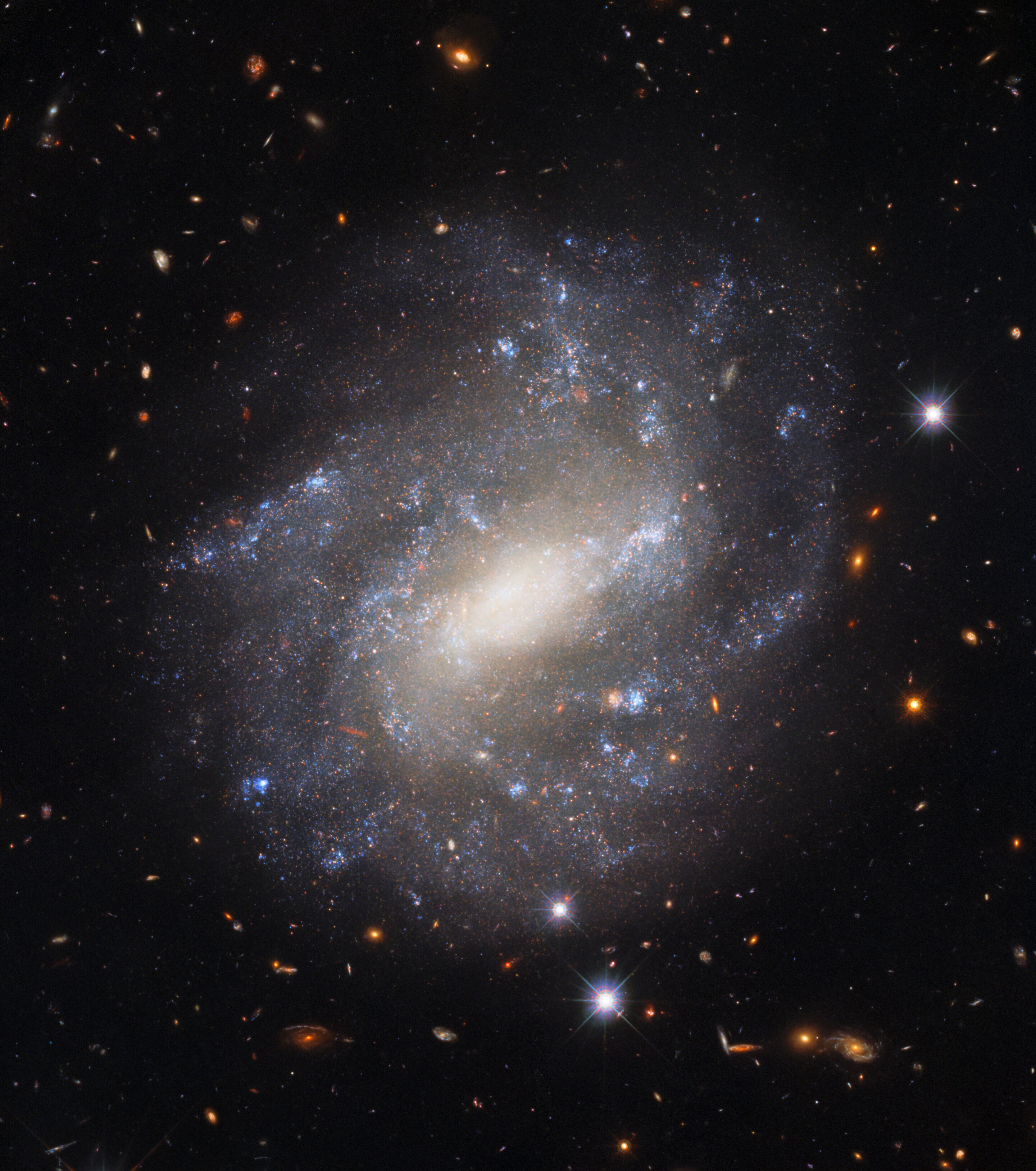 |
| Credit: ESA/Hubble & NASA, A. Riess et al |
The NASA/ESA Hubble Space Telescope's Wide Field Camera 3 captured images of UGC 9391, a lonely spiral galaxy. The galaxy is 130 million light-years away from Earth, at the north celestial pole, in the constellation Draco. Its star-studded spiral arms stand out brilliantly against a background of distant galaxies, which are only visible as vague swirls or smudges because to their great distances from Earth. Closer to home, the view also includes several considerably brighter foreground stars. These close brilliant stars are surrounded by diffraction spikes, which are visible spikes created by light interacting with the inner workings of Hubble's secondary mirror supports.
This picture is from a sequence of Hubble observations used by astronomers to build the Cosmic Distance Ladder, a series of linked measurements that allow astronomers to calculate how far away the most distant celestial objects are. Astronomical distances are only directly quantifiable for objects that are less than 3,000 light-years away. Astronomers rely on a set of measurable correlations calibrated against nearby objects at distances beyond this.
UGC 9391 assisted astronomers in improving their distance estimations by acting as a natural laboratory for comparing two measurement techniques: supernova explosions and Cepheid variables. Improving the precision of distance measurements allows astronomers to calculate the rate at which the universe is expanding, which is one of Hubble's primary research aims.



0 Comments